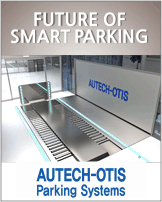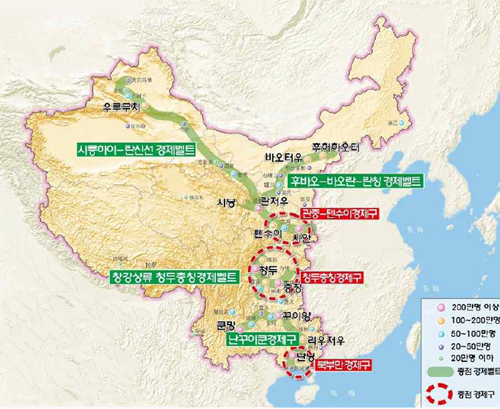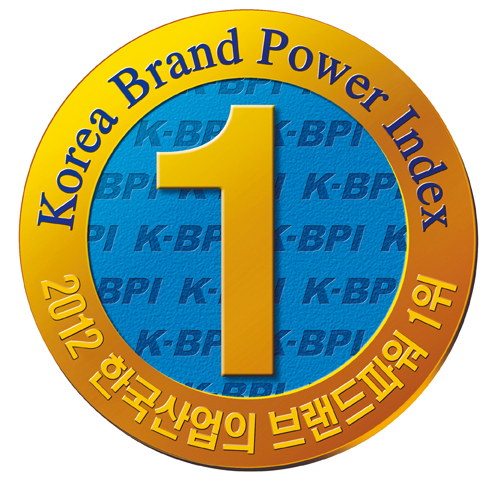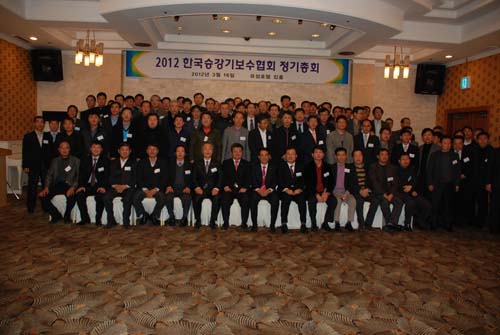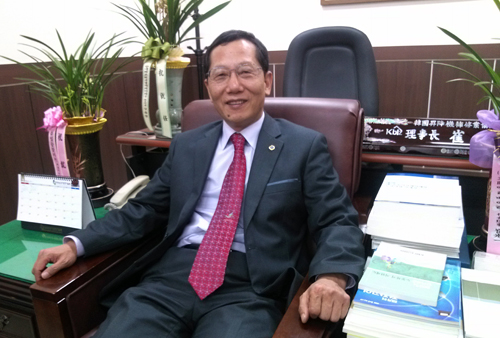|
|
|
Ministry of the Interior and Safety, Safety Improvement Division Announcement of all revised elevator inspection standards The main goal is to unify the EN code and mandate the installation of mandatory safety devices. 2012/04 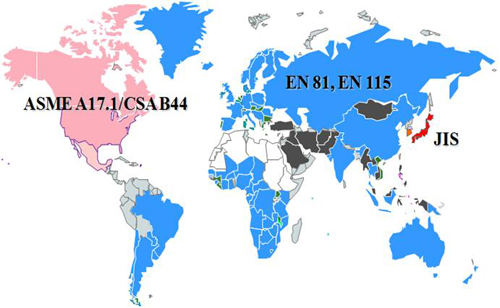 The Ministry of the Interior and Safety (MOIS) published a notice to revise all elevator inspection standards (MOIS Notification No. 2012-14) in accordance with Article 14-2 (Standard Items and Methods of Inspection) of the Enforcement Decree of the Elevator Facility Safety Management Act on the 14th of last month. The main objectives of the revision include strengthening the safety of elevators by installing mandatory safety devices in accordance with international standards and unifying the inspection standard clause system with international standard codes. Park Woo-jin, an official from the Safety Improvement Division of the Ministry of the Interior and Safety (hereinafter referred to as the Ministry of the Interior and Safety), said, "We expect to curb user safety accidents and increase safety by making it mandatory to install various safety devices such as elevator door deviation prevention devices, escalator handrail speed detection devices, and safety brushes to prevent pinching accidents." "We have reorganized the wording system of international standard inspection standards by codifying the principles of inspection standards in the text and describing detailed inspection standards for each type of elevator in the appendix," he explained. The proposed revised elevator inspection standards have been sketched out since the first half of last year and have been notified after several meetings with industry stakeholders, with a grace period of one year and six months. It is almost similar to the contents of the meeting held in September last year, except for some additions and modifications to the strength of the elevator door for observation, PESSRAL evaluation and SIL rating, the method of submitting technical documents by site, and the grace period. As of December 31, 2011, there were 446,707 elevators installed in Korea. The number of new installations has been steadily increasing at a rate of about 20,000 units per year since 2006, when 336,311 elevators were installed, 359,098 in 2007, 382,146 in 2008, 404,220 in 2009, and 424,201 in 2010. By type, passenger elevators accounted for the largest number of installations at 381,072, followed by freight elevators at 26,714, escalators at 24,248, dumbwaiters at 12,150, and wheelchair lifts at 2,523. The number of elevator accidents over the past five years (2006-2011) has been on a declining trend, with 90 in 2006 and 97 in 2007, peaking at 154 in 2008, followed by 115 in 2009, 129 in 2010, and 97 in 2011. According to the analysis of the causes of accidents based on the number of accidents in 2011, 85 of the 97 accidents were caused by user negligence (slipping, pinching, and falling), while only 12 accidents were caused by poor management, maintenance, manufacturing, and inspection. In 2011, 77 out of 97 accidents (77 cases) were escalator accidents. "As the number of elevators is increasing due to the trend of high-rise apartment and office buildings, the number of elevator accidents is also increasing," said the Ministry of Public Safety. "Safety accidents due to the absence of major safety devices stipulated by international standards, such as falls due to the elevator door deviation and accidents caused by tripping on the jaws of the elevator door, continue to occur." In particular, over the past three years, escalator-related accidents such as falls due to the difference in speed between escalator steps and handrails (totaling 4 cases, 1 fatality, 23 serious injuries, and 18 minor injuries) and escalator jamming (totaling 14 cases, 20 serious injuries, and 17 minor injuries) have continued to occur frequently. Of the 97 safety accidents that occurred last year, 77 were on escalators. Escalator accidents have continued this year as well. In February, three people were injured after being pushed off the escalator at the entrance of Lotte World's ride Comet Express, and in March, three people suffered abrasions when an escalator reversed course at Daelim Station on Seoul Subway Line 7. In response, the Ministry of Land, Infrastructure, and Transport (MLIT) has newly added or strengthened provisions requiring the installation of speed detection safety devices for escalator movable handrails, devices to prevent overspeeding, and safety brushes to prevent pinching accidents. As a result, escalators must be stopped if they run for more than 15 seconds with a speed deviation of more than 15% between the stepping surface and the handrail, or if the speed exceeds 1.2 times the normal speed. In addition, an automatic external interlocking device for the intercom to quickly rescue trapped passengers in situations such as 9-15 power outages is now mandatory (automatically connecting to an external maintenance company in the absence of an intercom in the security room, machine room, etc. The Ministry of the Interior and Safety also worked to unify the inspection standard wording system with the EN code, an international standard code. Therefore, the existing inspection standard, which was composed of a step-by-step enumeration method of elevator application, type, structure, inspection, and judgment according to the Japanese Inspection Standards (JIS), was revised to harmonize the principles of the inspection standard, and the inspection standards for each model were described in the appendix. Tables 1 through 7 are listed for each type of elevator, including electric elevators, hydraulic elevators, escalators and moving walks, dumbwaiters, small elevators, vertical wheelchair lifts, and inclined wheelchair lifts, with inspection items and judgment criteria in Table 8 and technical documents in Table 9. Continued regulation of elevator-related laws and regulations has kept the industry on its toes "In 2008, the International Organization for Standardization (ISO) adopted the European standard as a basic reference standard, and 80% of the world's elevator safety standards are applied, including China's introduction in 2003." "The annual accident rate (based on 10,000 elevators) of MRL, which has adopted the EN code since 2004, is only 17.9% compared to general elevators," said the ministry, explaining the rationale for the introduction of the EN code. As with any legislation, it is essential to examine the costs and benefits of regulation before and after amendments. The elevator industry is currently struggling to find a way to cope with not only the revision of the elevator inspection standards, but also the revision of the Elevator Safety Act and the revision of the Enforcement Rules of the Products and Services Act due to the addition of certified elevator parts. The industry is in a state of crisis due to various regulatory changes centered on elevator safety. In particular, the grace period for elevator inspection standards has been extended by six months, but it is not enough time to complete all preparations, according to the industry. Ministry of the Interior and Safety, 1 year and 6 months grace period...enough time to respond When calculating the unit cost of production by applying the revised elevator inspection standards, it increases by about 5 to 10 percent. As shown in [Table 2], assuming an average annual installation volume of 23,000 units, if a general elevator is installed with the revised inspection standards, the unit price will increase by 2 million won from 30 million won to 32 million won per unit, and the unit price of escalators will increase by 3 million won from 50 million won to 53 million won per unit. On the other hand, MRLs are subject to the same inspection standards, so if you consider issues such as unification of production lines, the manufacturing cost can be lowered by 3 million won per unit. The expected effects of the mandatory installation of elevator safety devices are to prevent user safety accidents and reduce social costs by increasing elevator safety, and to indirectly support exports to the elevator industry. The three-year average damage caused by serious elevator accidents from 2008 to 2010 was 15 deaths and 148.4 injuries per year. If the accident rate is reduced by 30% by installing safety devices, the annual direct loss savings is estimated to be KRW 224 million, and the indirect loss cost (social cost) is estimated to be KRW 8,962 million, so the direct and indirect social loss savings are expected to reach KRW 11,202 million. In particular, if general accidents and malfunctions that are not major accidents are assumed and calculated at five times the rate of major accidents, the direct and indirect social loss savings are estimated to reach 22,260 million won. In addition, by aligning the inspection standards with international standards, it is expected to support exports by raising the value of elevator-related exports ($73,511,000), which has been plummeting since 2010, to the level of 2009 exports ($240,349,000), resulting in additional exports worth $1.7 million per year. "We need to prepare to increase elevator exports by introducing the European standard (EN code) as soon as possible in preparation for the booming construction economy in Russia, the Middle East, and other countries," said the Ministry of Land, Infrastructure, and Transport. "Since it applies to newly installed elevators that apply for a building permit after the effective date, there is enough time to respond as there is at least an additional 6 months to a year between the building permit and actual construction." "In the case of remodeling sites, if it is not possible to apply the revised elevator inspection standards without changing the building structure such as machine rooms and hoistways, the existing inspection standards are applied," he said, adding, "In the case of MRL, there is no problem with the introduction of the EN code since it has been manufactured and inspected since 2004." Looking at the share of MRLs in the total number of elevator installations in the last two years, 23,823 of the 24,478 elevators installed in 2010 were manufactured and installed by MRL-experienced companies, and in 2011, they accounted for 97% of the total. |

|
 Home Intro
Home Intro
